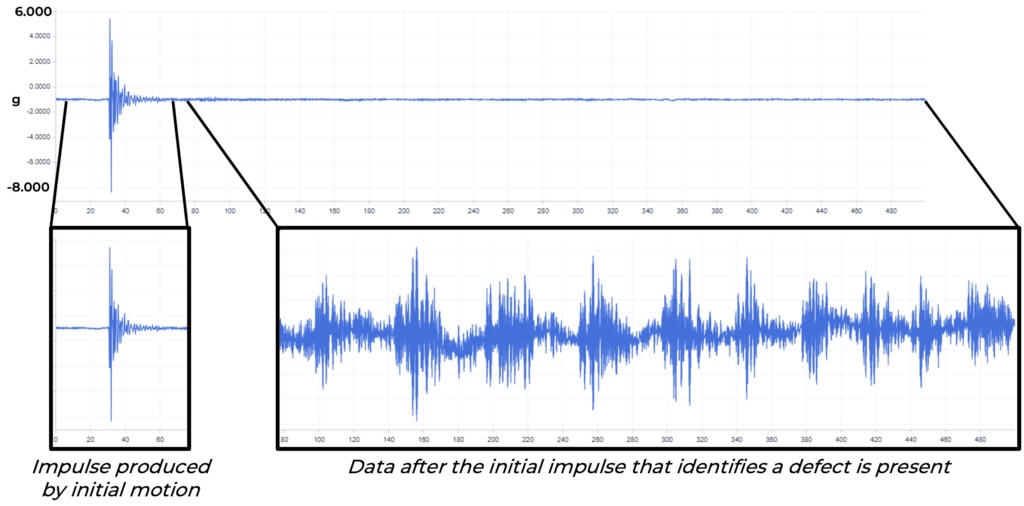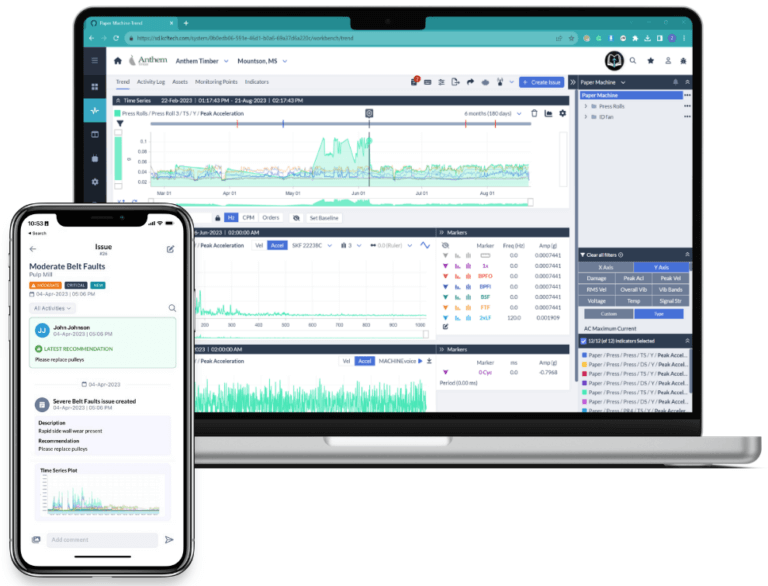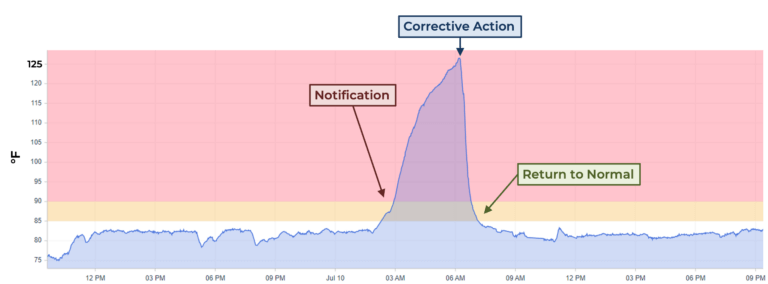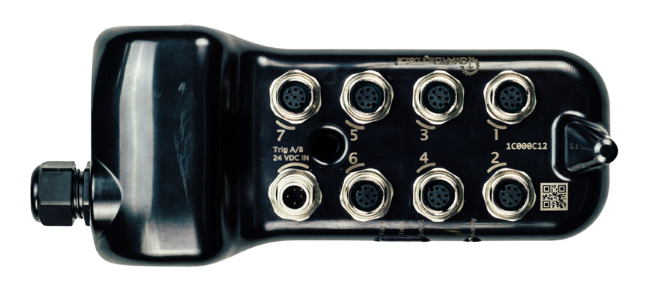Mastering the giants: Innovations in monitoring the health of overhead cranes
Case Study
Overhead Cranes
Overhead cranes are the lifeblood of several industries in manufacturing and are of extreme criticality. For many facilities, unplanned downtime on a crane could mean a complete halt of all production, resulting in massive expense.
At first glance, cranes can be intimidating, but as with everything, they can be broken down into simple components to effectively monitor their health. A crane is just a collection of motors, gearboxes, and bearings. The challenge is that these components operate intermittently and almost never make the exact same motion repeatedly. From a monitoring perspective, this has made cranes nearly impossible to extract valuable machine health data.
Timed vibration readings

With most wireless vibration sensors, the readings are collected on a time interval independent to each sensor. This means that from one reading to the next, you may catch the crane when it is off, as it is ramping up, or when it is under full load. The variability of time-based readings can be observed in the trendline above and can often trigger false alarms.
Triggered vibration readings

To overcome this fundamental issue, readings need to be taken not based on time, but on the machine’s operating state. In addition to this, it is essential to identify what state of operation will provide the best representation of the health of each component of the crane. Once identified, triggered vibration readings enable the user to continually record readings that create a trendline representing the crane’s health as seen above.
Monitoring with the IoT HUB
KCF’s IoT HUB enables the novel capability of extracting steady-state data from intermittent equipment. Through fine-tuned triggered vibration readings, SMARTdiagnostics™ can filter out extraneous data from initial motion and allow users to identify fault conditions as though it were a continuously rotating piece of equipment. Additionally, the HUB allows for an extensive list of inputs outside of vibration readings. We utilize vibration, pressure, temperature, and many other sensor types on overhead cranes to develop a comprehensive crane health solution.

KCF’s IoT HUB also synchronizes its readings. This means that on a crane hoist, for example, the readings will be taken at the exact same time to represent all hoist components under the same load. All these tools combined create a never-before-seen opportunity to pull actionable data from an asset type previously thought to be nearly impossible to monitor.
When approaching a crane, it is vital to identify the right components to monitor. KCF commonly focuses on motors, gearboxes, pillow block bearings, and wheel bearings. These monitoring points have unlocked massive value for our customers and give them awareness to the broadest range of potential crane failure modes.

The following examples come from real crane deployments amongst KCF’s customer base. The data from these crane deployments enables fast action by the customer to mitigate the issues before they produce any downtime
Electrical cabinet temperature

This crane’s cooling system for the electrical cabinet cut out due to an issue with the AC motor. As a result, the temperatures rose significantly. Left unchecked, the crane’s electrical drives would have overheated, resulting in 32 hours of downtime. SMARTdiagnostics notifications alerted the customer who got an emergency cooling system in place to prevent catastrophic failure and electrical rebuild of the crane.
Structural looseness

After installing triggered IoT HUBs on the bridge components, the data showed repetitious knocking on the south bridge motor that was not observed on the north bridge motor. KCF personnel worked with the customer to investigate this issue with the customer while on site and observed slop in the mounting brackets for the south bridge drive. The customer team implemented a temporary fix, which reduced the slop significantly, and plan to install a completely re-machined motor mounting in their outage in January.

More of the IoT HUB
The SMARTdiagnostics IOT HUB is the next generation of full asset health solutions designed to handle the most complex asset monitoring needs. Including: triggered collections, multi-functional sensor ports, and the ability to withstand higher temperatures with external power sourcing, with optional wired power solution.
KCF Full Guide
Learn more about gaining a competitive edge with the most advanced, comprehensive machine health optimization platform.